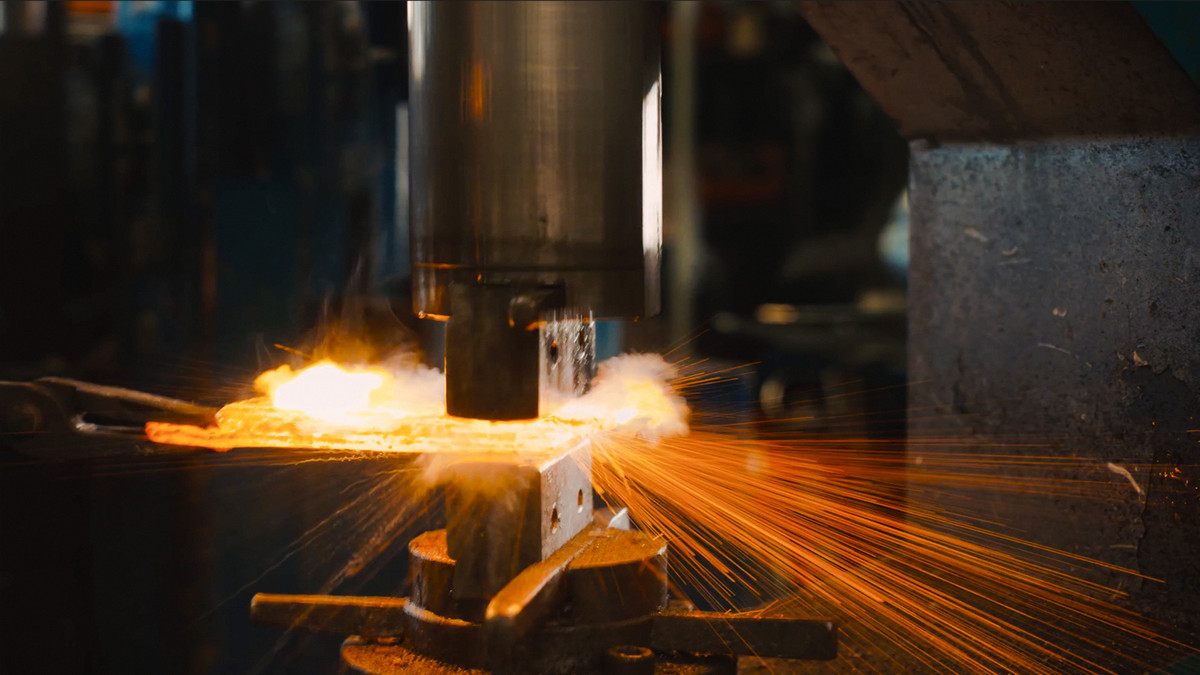Fundamental Welding Principles and Its Various Types
Welding is a process that uses "heat" and "electricity" to connect two pieces of metal, and the type of welding metal will also affect the welding results and technical requirements; like many professional skills, welding technology also has different levels of difficulty. First understand the most common types of welding introduction, principle teaching, and skill analysis.
Published: May 10, 2023
Basic Welding Technology Introduction
-
Shielding Gases
In most cases, welding is most commonly used in "steel", but aluminum, copper and other metals can also be connected using welding technology, and different types of welding require different shielding gases used by welders, mainly used The reason for helium and argon is that the above are all inert gases, which can withstand extremely high temperatures without dissociation, and are used to protect and isolate the air during welding.
The use of inert gas welding can avoid oxidation of the welded material and help and ensure that the welded metal has no other contaminants during the welding process, which makes the welding result stronger, safer, and has a cleaner appearance.
-
Proper Nouns Related to Welding Technology
When welding, the seam to be connected is formed, called "weld seam". Both sides of the welding seam will be affected by welding heat during welding, and the structure and performance will change. This area is called the "heat-affected zone".
Due to the differences in workpiece materials, welding materials and welding currents during welding, overheating, embrittlement, hardening or softening may occur in the weld and heat-affected zone after welding, which also reduces the performance of the weldment and affects the weldability; therefore, welding It is necessary to understand and adjust the welding conditions before welding, including preheating the interface of the weldment before welding, heat preservation during welding and post-weld heat treatment, which may improve the welding quality of the weldment. Therefore, to make good welding and techniques, in addition to patient practice, you also need to be familiar with various welding knowledge and principles.
-
Types of Welding
There are more than 50 kinds of metal welding methods and types known at present, and most of the welding methods are generally divided into three categories: fusion welding, pressure welding, and brazing.
-
Fusion Welding
Fusion welding, also known as "melt welding"; as the name implies, is a way to directly heat the workpiece interface to "melted" during the welding process without any pressure; At this time, the heat source heats and melts the interface between the two workpieces to be welded to form a "melt pool", and the molten pool will move forward with the heat source, and finally cool to form a continuous weld to connect the two workpieces into one.
Features:
In the process of fusion welding, if the air is in direct contact with the high-temperature molten pool, the oxygen in the air will oxidize the metal and synthesize with the alloy elements of the object; if nitrogen, water vapor, etc. in the atmosphere enter the molten pool, it will be In the subsequent cooling process, defects such as pores, slag inclusions, and cracks were formed in the weld, which affected the quality of the weld.
Therefore, to improve welding quality, gas is usually used to protect arc welding, and argon, carbon dioxide, and other gases are used to isolate other elements in the atmosphere to protect the arc and molten pool rate during welding;
Another example is when the steel is welded, adding "iron titanium powder" with a large affinity for oxygen in the coating of the electrode to deoxidize, can protect the beneficial elements manganese and silicon in the electrode from oxidation and enter the molten pool, after cooling can obtain high-quality weld results.
-
Pressure Welding
Pressure welding, as the name suggests, is to use pressure to make the two workpieces in the original solid-state to realize the bonding between their atoms, so it is also called "solid welding"; pressure welding is often used for resistance In the pressure welding process of butt welding, when the current passes through the connection end of the two workpieces, the temperature rises due to the large resistance there. When heated to the "plastic state", the connection becomes integrated under the action of the axial pressure.
The common feature of different pressure welding methods is to apply pressure during the welding process without adding other filler materials. The pressure welding methods such as "diffusion welding, high-frequency welding, cold pressure welding, etc." are not melting processes. Once the welding is completed, there is no problem with beneficial alloy elements burning as well as harmful elements intruding into the weld seam, which simplifies the entire welding process and improves the safety and sanitary conditions of welding.
Because the heating temperature is lower than fusion welding and the heating time is short, the area affected by heat is also small. Therefore, many materials that are more difficult to weld by fusion welding can often be welded to the same strength as the base material by pressure welding with high-quality connectors.
-
Brazing
Brazing, which is also divided into Brazing and Soldering, is a very widely used welding method. It mainly uses metal materials with a melting point lower than the workpiece itself as the "bonding material", and heats the workpiece and the brazing material to "higher than the brazing material". "The melting point of the material, but the temperature lower than the melting point of the workpiece". Welding the workpiece by using the liquid material to fill the gap between the two interfaces and realize the mutual diffusion between the atoms and the workpiece.
The Prospect of Welding Automation Technology
The development of electronic technology, computer microelectronic housing, and automation technology has promoted the development of welding automation technology. Especially the introduction of unit technology such as numerical control technology, flexible manufacturing technology, and information processing technology has promoted the revolutionary development of welding automation technology.
- The intelligentization of the welding process control system is one of the core issues of welding automation and an important direction for future research. Research on the best control methods should be carried out, including linear and various nonlinear controls. The most representative is the fuzzy control of the welding process, neural network control, and the research of the expert system.
- Welding flexibility technology is also the focus of research. In future research, various optical, mechanical, electrical technologies and welding technology will be organically combined to achieve precise and flexible welding. Using microelectronics technology to transform traditional welding equipment is a fundamental way to improve the level of welding automation. It is a current research direction to combine CNC technology with various types of welding mechanical equipment to improve its flexibility; also, the combination of welding robots and expert systems realizes functions such as automatic path planning, automatic correction of trajectories, and automatic control of penetration. Is the focus of research.
- The integration of the welding control system is the integration of people and technology and the integration of welding technology and information technology. The information flow and material flow in the integrated system are its important components. Promoting their organic combination can greatly reduce the information volume and the requirements of real-time control. Pay attention to the ability to respond and judge human beings in control and computer processing, establish a friendly interface for human-machine, and harmonize humans and automatic systems, which are factors that cannot be underestimated in integrated systems.
- Improving the reliability, quality stability, and control of welding power supply, and excellent dynamic performance are also the subjects of research. Develop high-performance welding machines that can adjust arc motion, wire feed, and welding torch attitude, can detect the beginning of weld slope, temperature field, molten pool state, penetration status, provide welding specification parameters in time, and actively develop the welding process computer simulation technology. The evolution of welding technology from "skill" to "scientific" roller is an important aspect of welding automation. The first ten years of this century will be a favorable period for the rapid development of the welding industry.
Remarks: Whenever and wherever welding is done, appropriate safety equipment, including welding helmets, welding gloves, welding apron, and appropriate clothes, should be completely worn.
Published by May 10, 2023
Source :1on1







.png)






